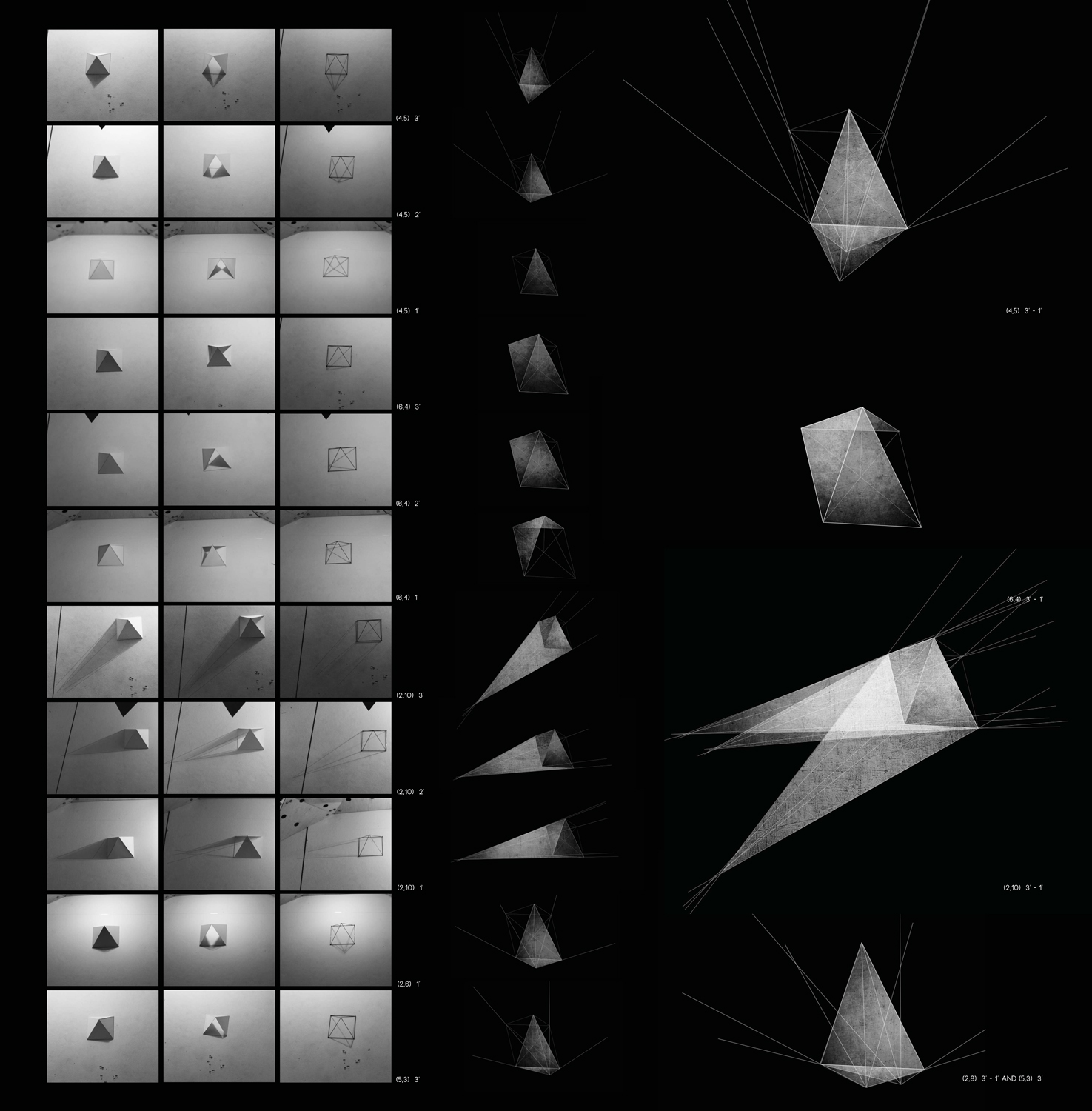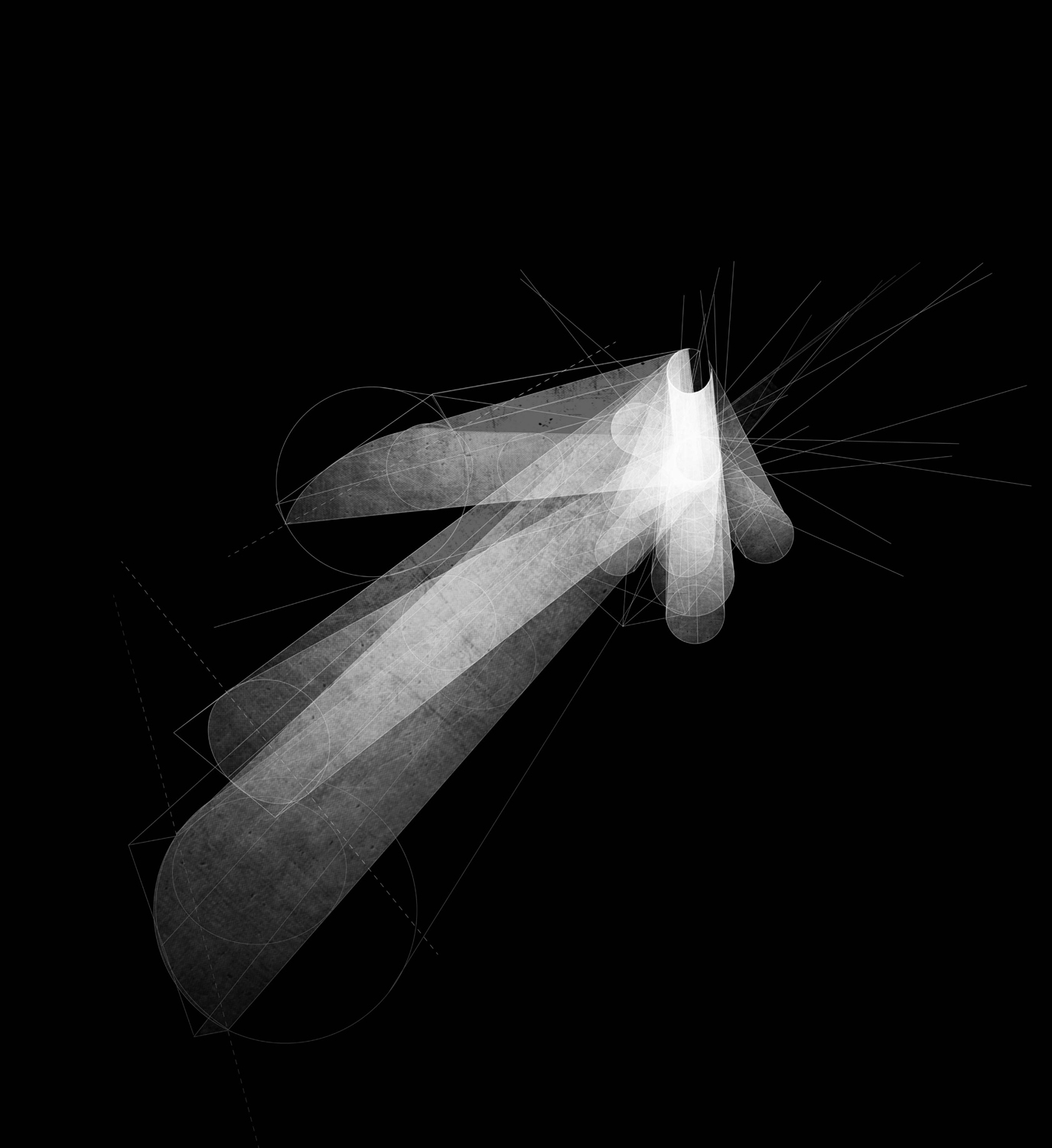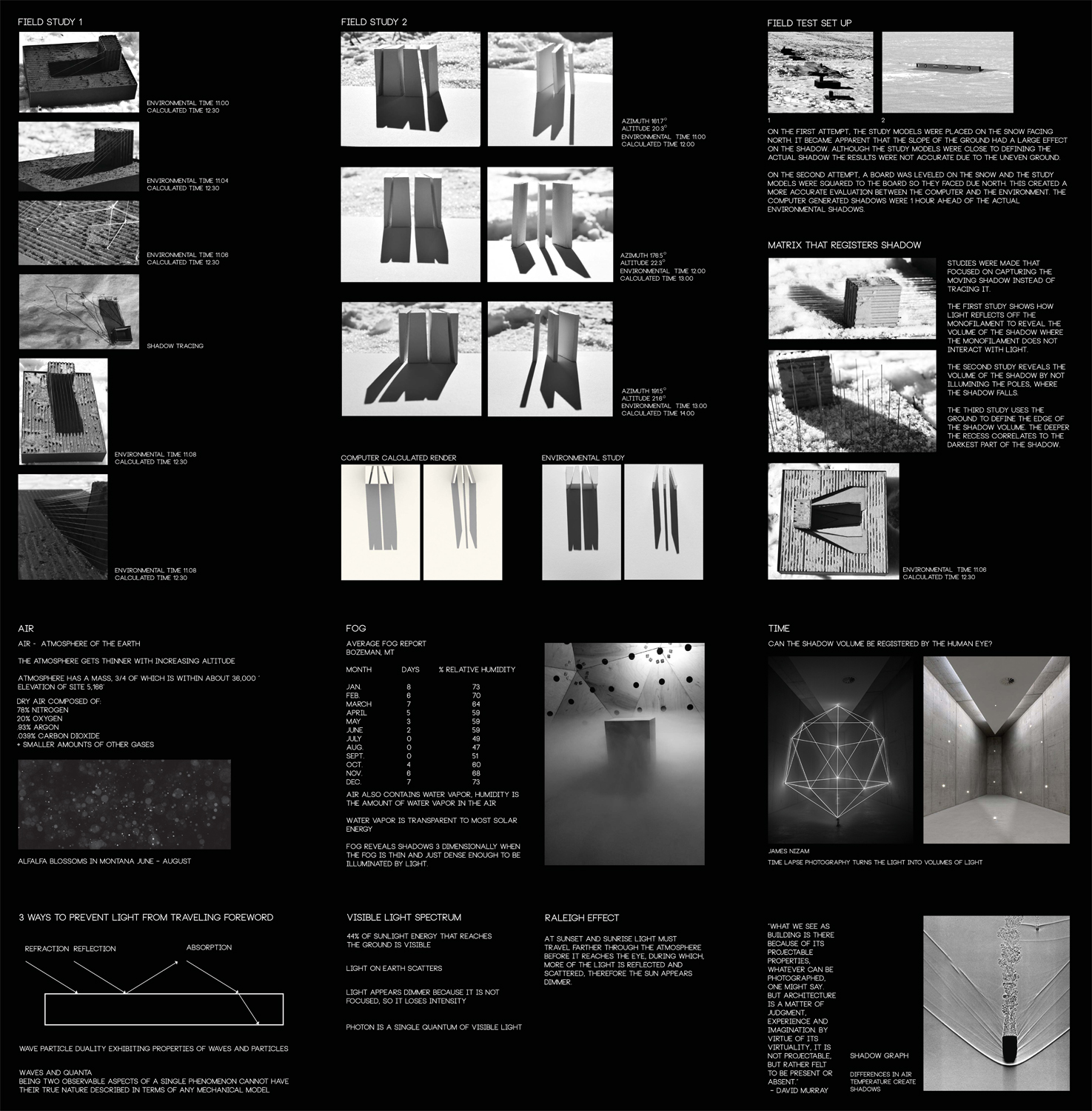Rediscovering the shadow
This work will explore the role of shadows pertaining to the human experience through the lenses of architecture, cultural symbolism and sculpture. The intent is to show their importance in relation to the human imagination and perception.
To better understand the basic properties of shadows, casting objects and light sources, studies were conducted in a light box. Four platonic shapes where chosen to understand shadows on perpendicular, sloped, curved and rounded surfaces. These shapes were then made hollow and void to better understand the casting edges. This study resulted in photographs, which were then narrowed down by interest. The photographs of interest were then drawn in plan oblique. The drawings start to reveal the three dimensional quality of the shadow.
The project continued morphing and interest in an exterior sculpture developed, with the intent of installation so in tune with the sun that it starts to reveal different aspects of the shadow throughout the year. A site was selected that was similar to the light box studies, in that it was flat and had no other influences of shadows. The site is an alfalfa field on Gooch Hill, Bozeman, Montana and is only influenced by the mountains which control sunrise and sunset. Using sun path charts to conduct site analysis, the solar section shows sunrise and sunset times on the site, based off of information from the University of Oregon’s Solar Research Lab.
Models were created to show the shadow as volume, through different times in the year. It was from these models that the shadow became the subject of interest, not the object casting it. A methodology was created for making a shadow generator by volumizing land. This methodology would work in any location to create an object to cast a shadow. The object could be simple because the shadow is constantly changing. Study models investigating volume of the shadow were created for the 21st of November at 12.30 pm. Monofilament was chosen as a modeling material because of its transparent qualities. The monofilament hides and reveals itself as one interacts with it, similar to the changing qualities of the shadow.
I became interested in the shadow as a physical volume. It became my mission to reveal the shadow as a volume. There is an interesting relationship between the shadow and its shade. Physics claims that a shadow has no mass, therefore no volume. But the shadow also exists as a physical volume because I can enter into it. Philosophers claim that there is an essence to the shadow. This essence is the volume.
Is the volume of the shadow revealed through defining the edges of the shadow or through the presence of being in it?
Does the shadow volume appear by creating a matrix that acts as a constant?
Can the air particulate be magnified to shadow in the space above the ground?
How does one measure something that cannot be seen?
I have come to the conclusion that I can reveal the physical volume of the shadow through interiors and exteriors. Interiors allow for the shadow to fill a space, a space we can also enter.












